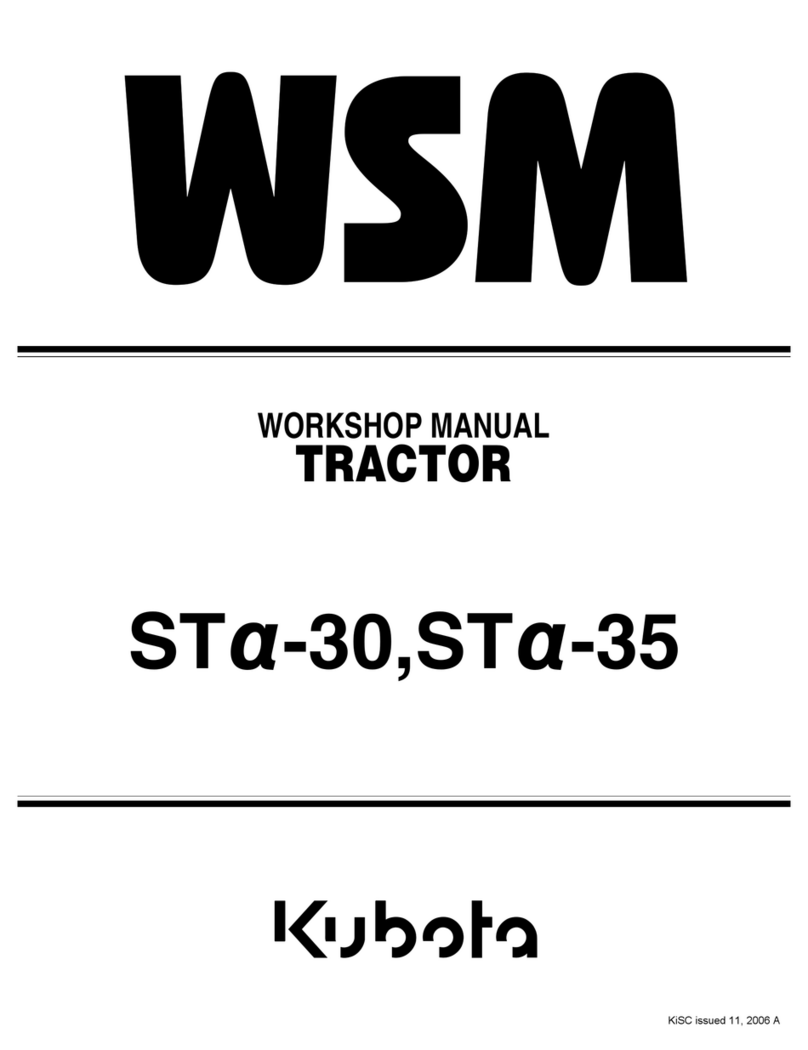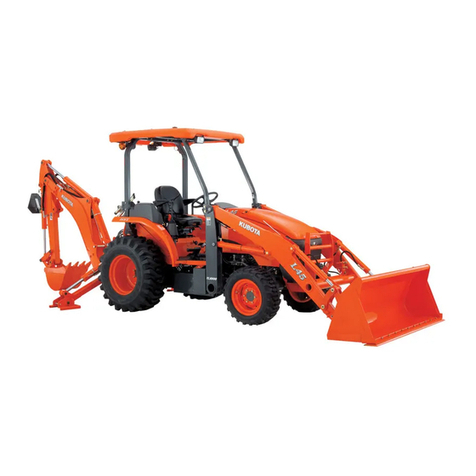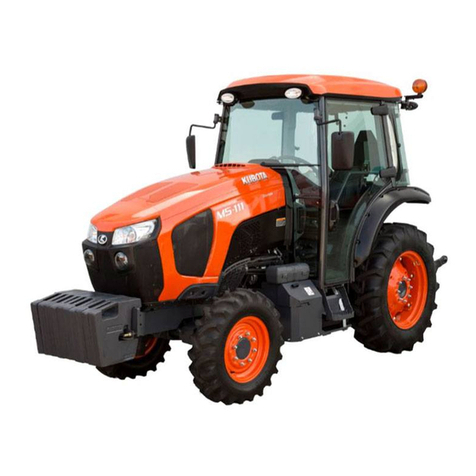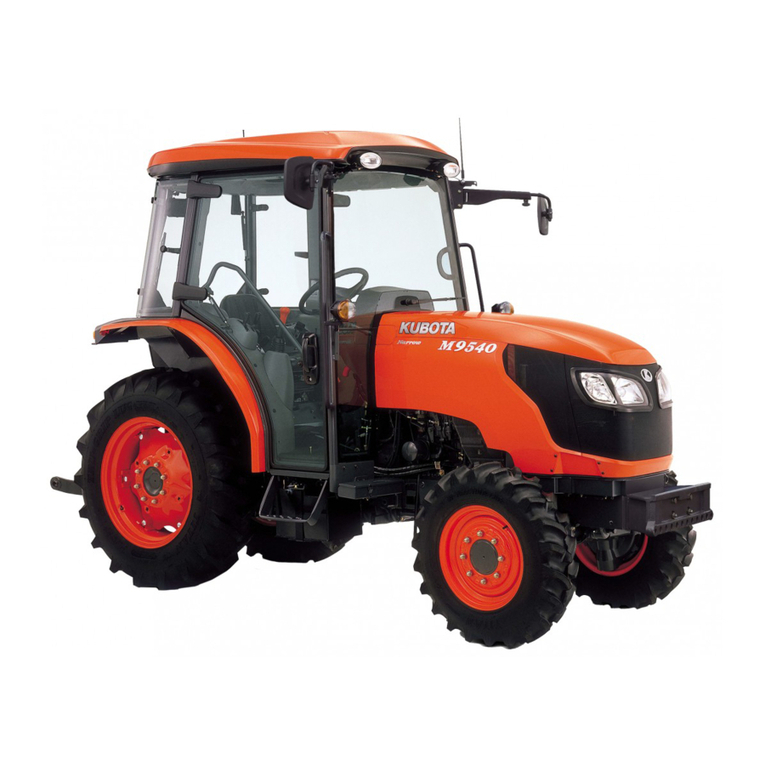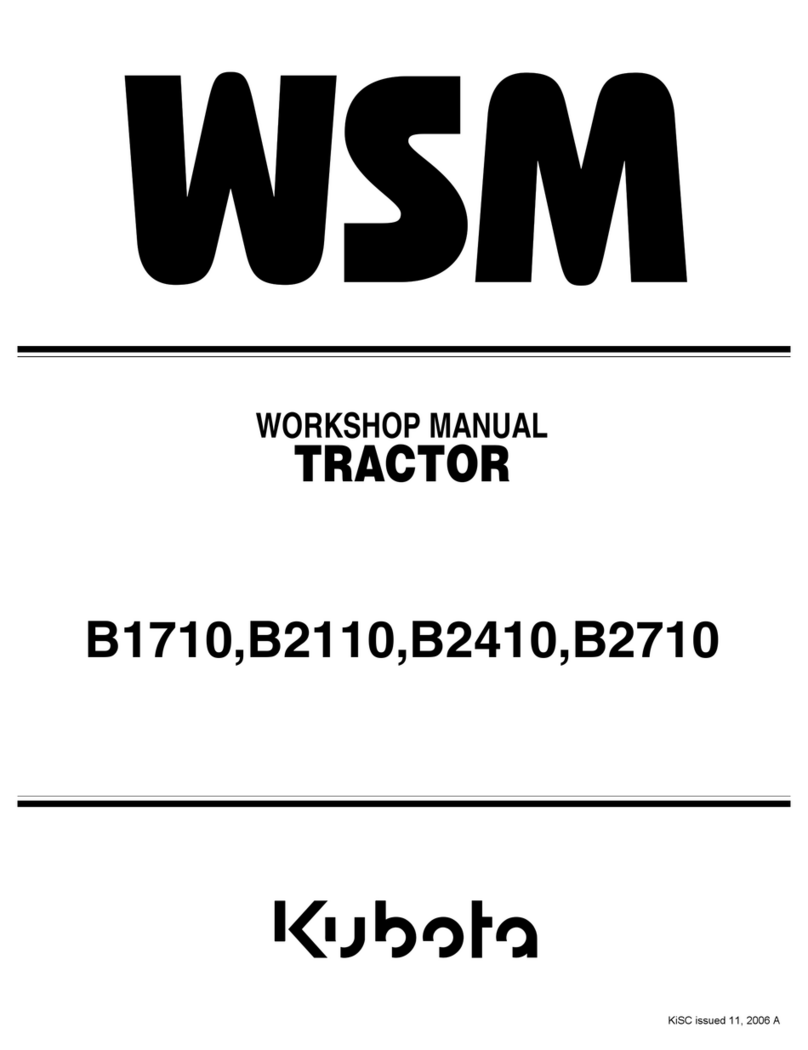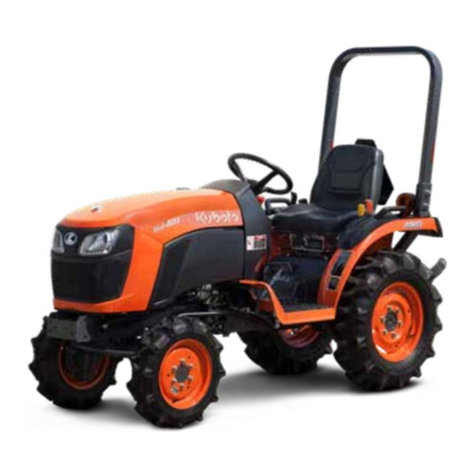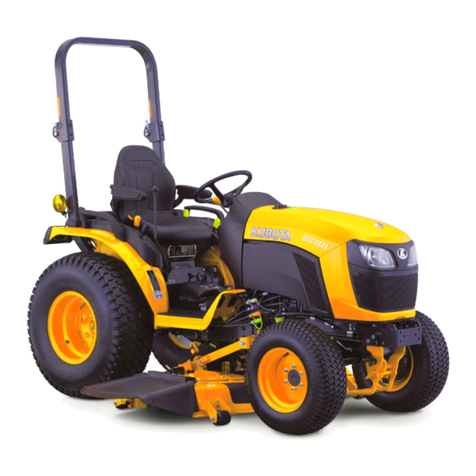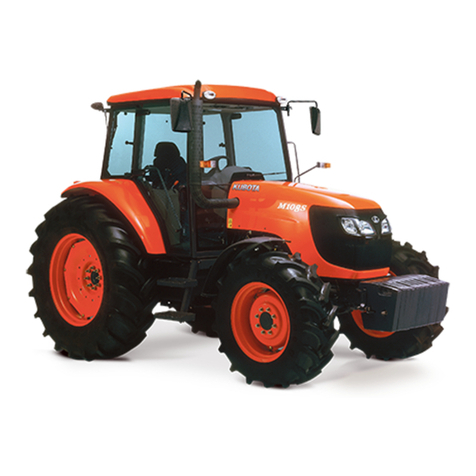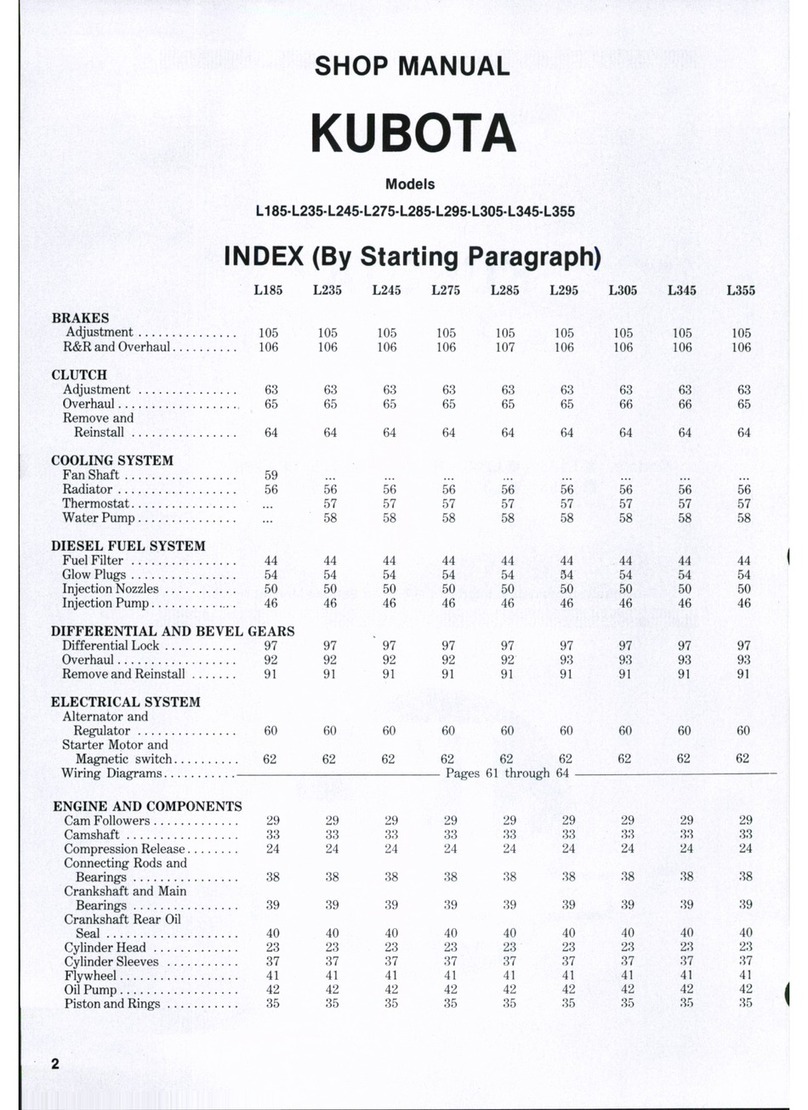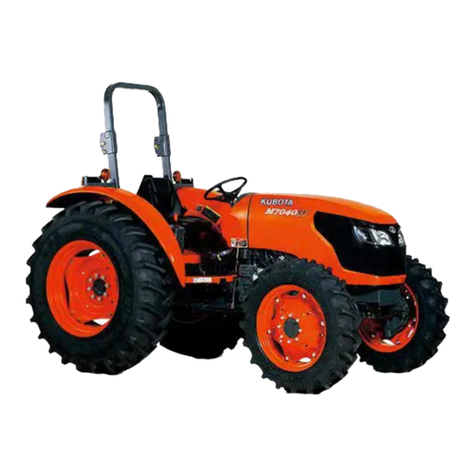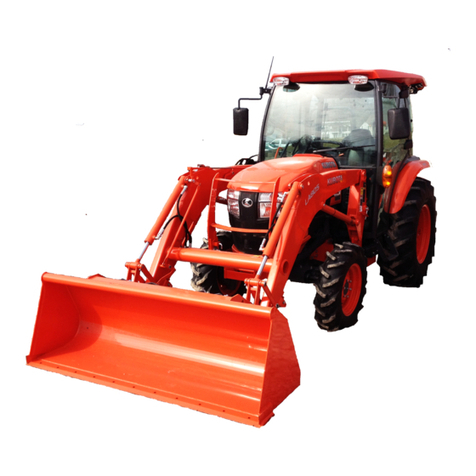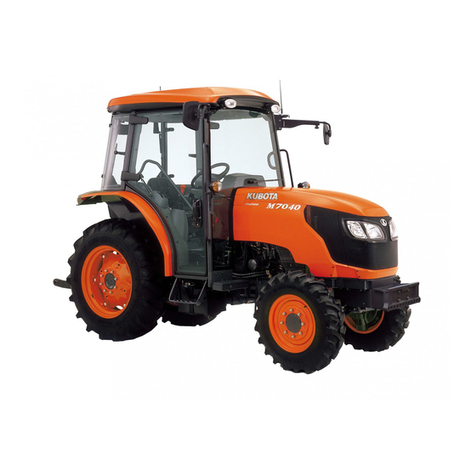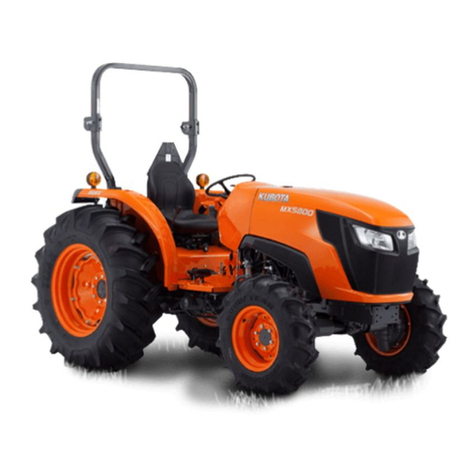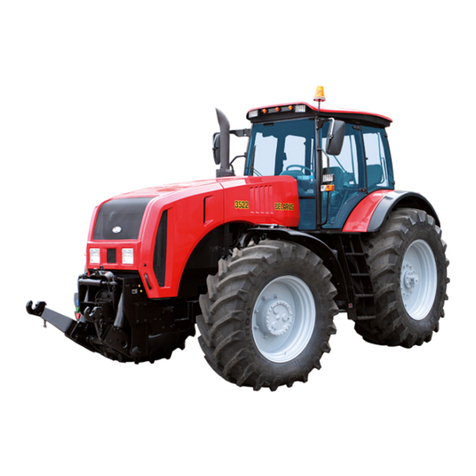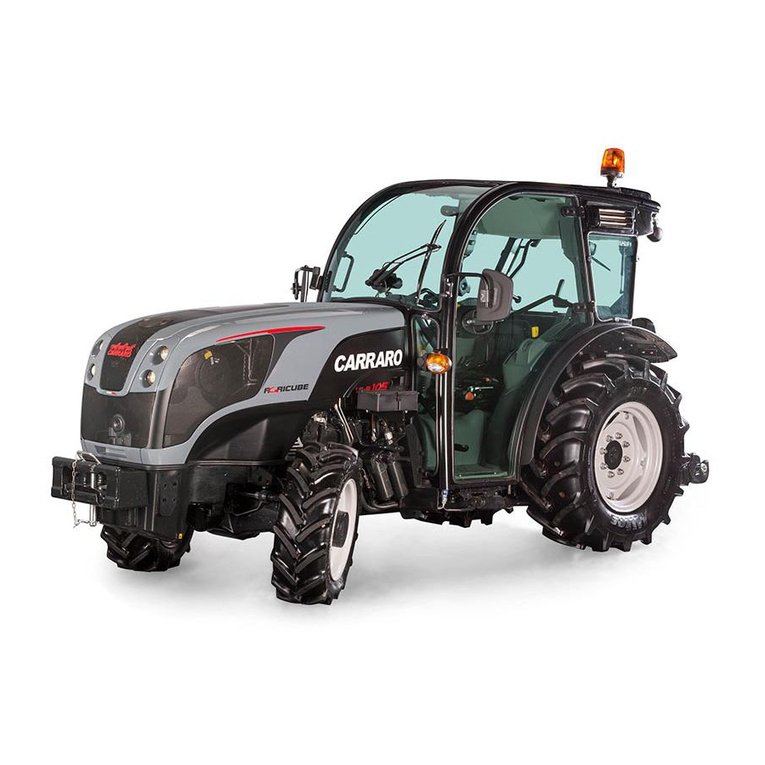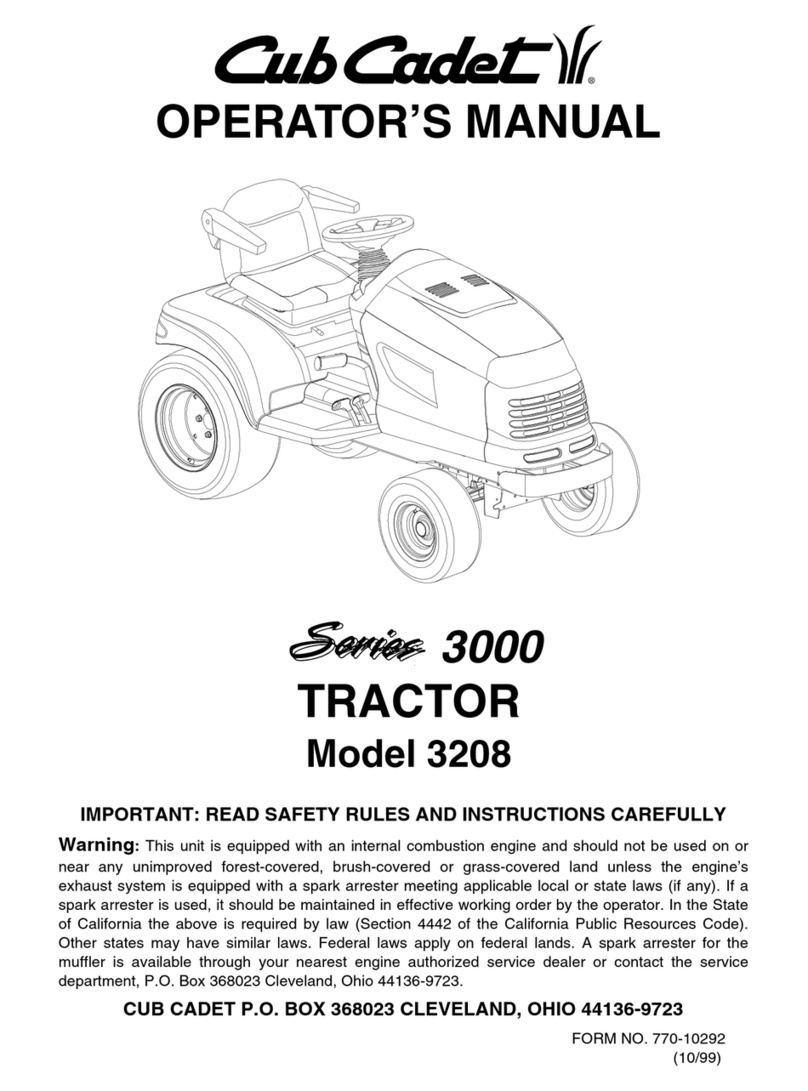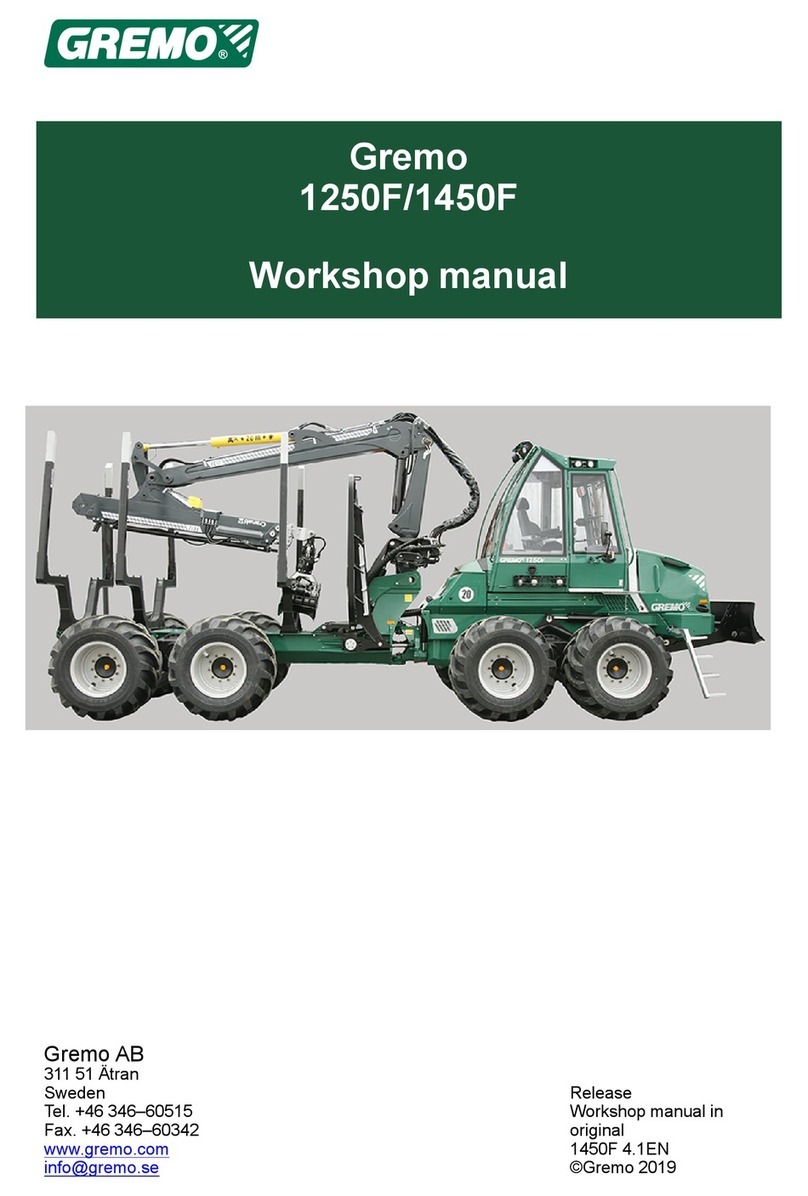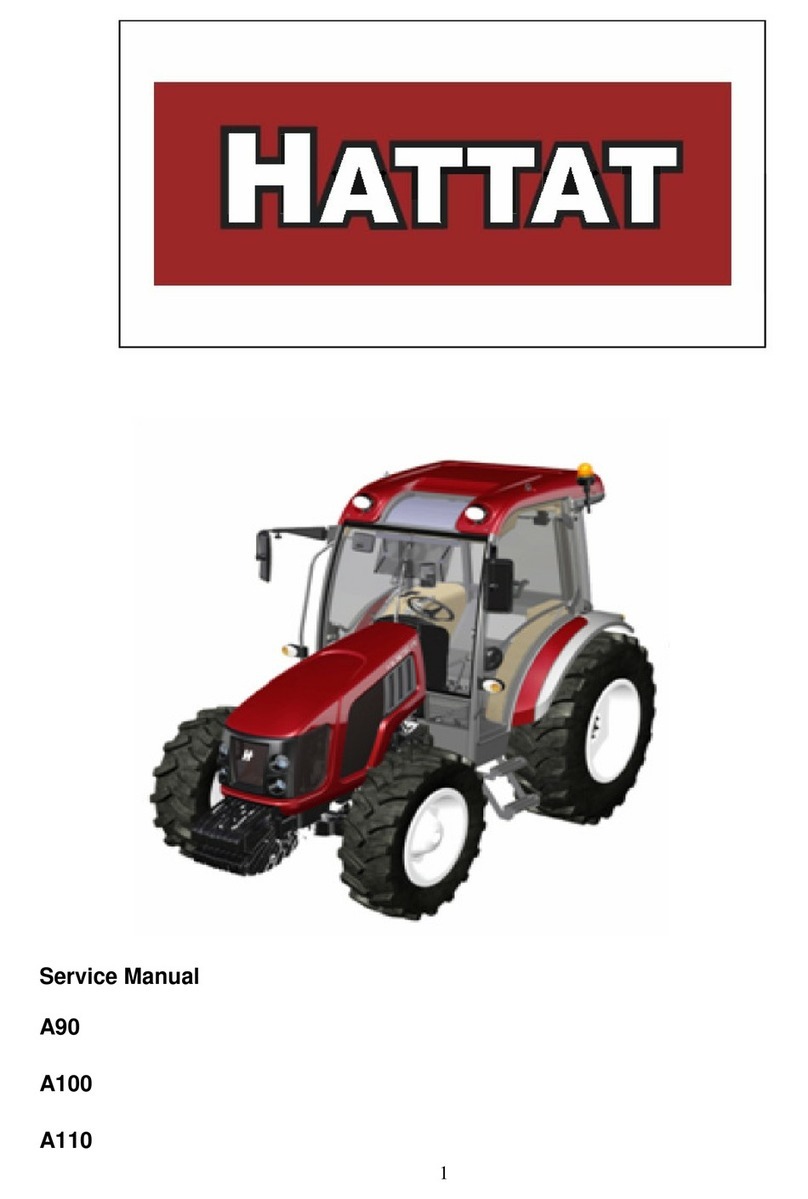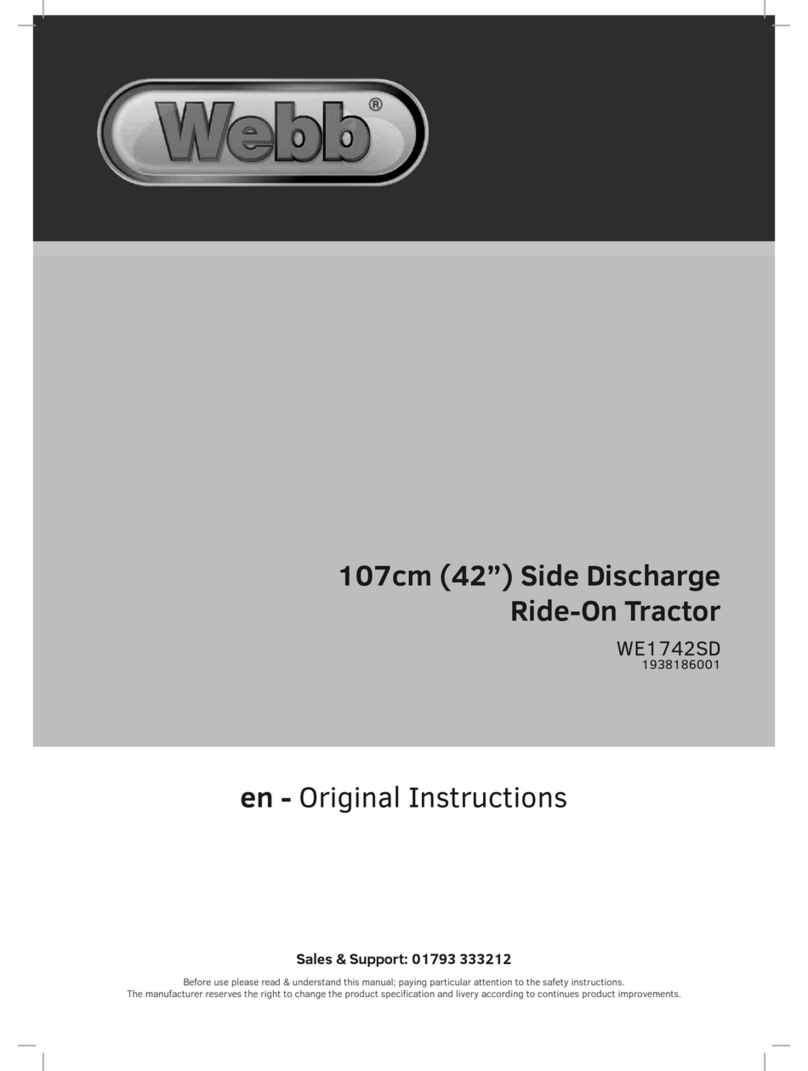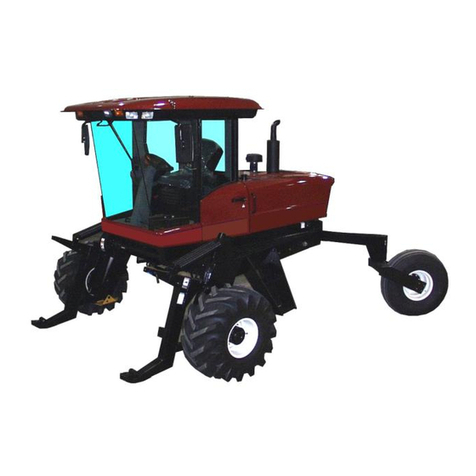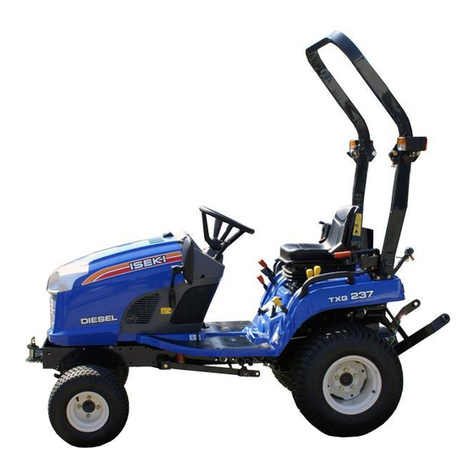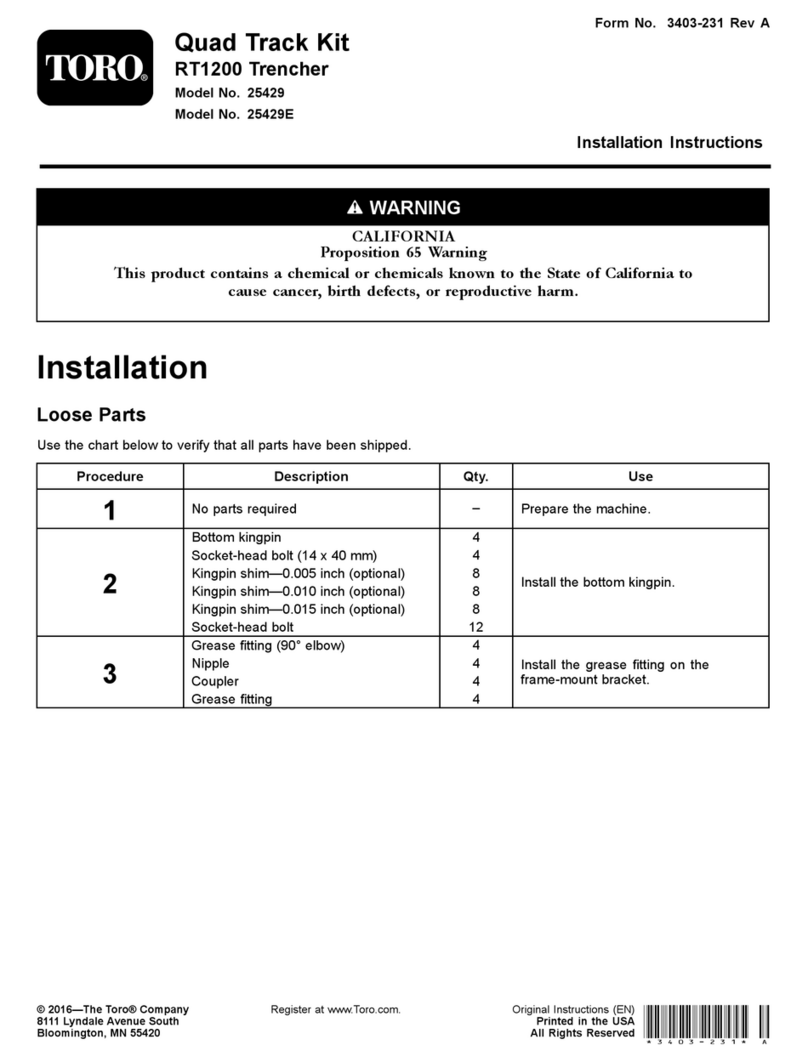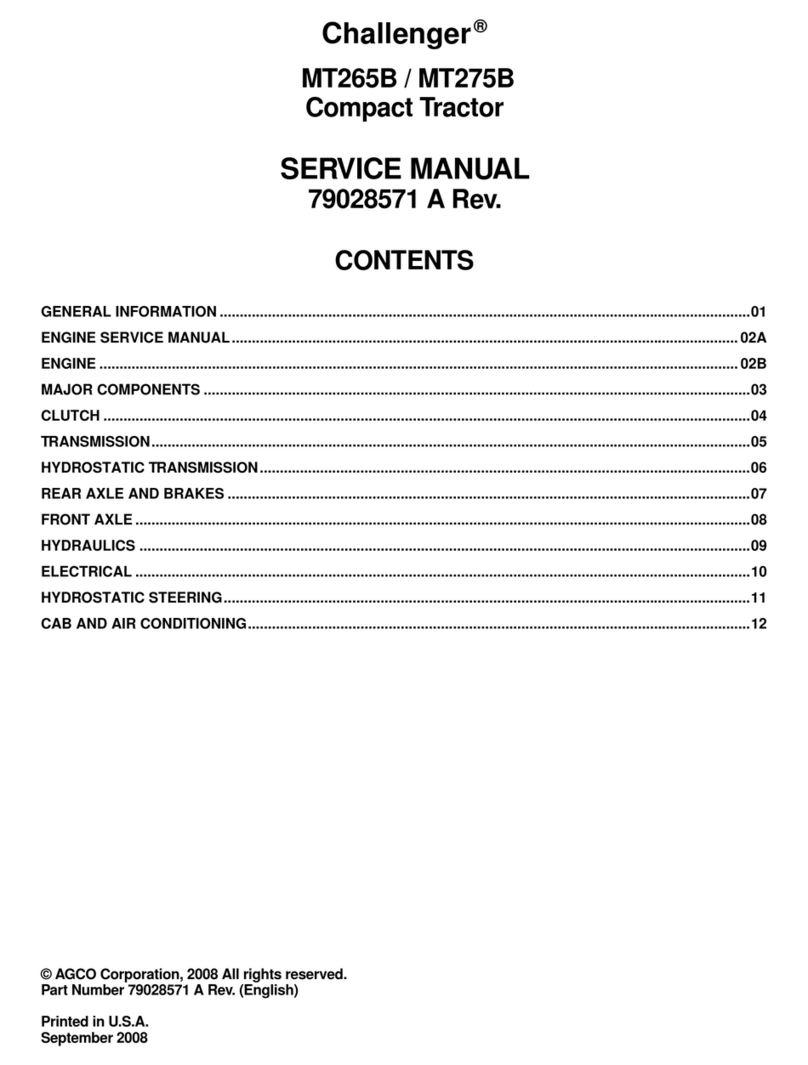
2 SAFE OPERATION
2. OPERATING THE TRACTOR
♦
Starting
1. Always sit in the operator's seat when starting engine
or operating levers or controls.
2. Before starting the engine, make sure that all levers
(including auxiliary control levers) are in their neutral
positions, that the parking brake is engaged, and the
Power Take-Off (PTO) is disengaged or "OFF".
Fasten the seat belt if the tractor has a CAB, a fixed
ROPS or a foldable ROPS in the upright and locked
position.
3. Do not start engine by shorting across starter
terminals or bypassing the safety start switch.
Machine may start in gear and move if normal starting
circuitry is bypassed.
4. Do not operate or idle engine in a non-ventilated area.
Carbon monoxide gas is colorless, odorless, and
deadly.
5. Check before each use that operator presence
controls arefunctioning correctly. Test safety systems.
(See "EVERY 50 HOURS, Checking Engine Start
System" in "PERIODIC SERVICE" section)
Do not operate unless they are functioning correctly.
♦
Working
1. Pull only from the hitch. Never hitch to axle housing or
any other point except the hitch; such arrangements
will increase the riskofserious personal injury or death
due to a tractor upset.
F-11493A
(1) Hitch
2. Keep all shields and guards in place. Replace any that
are missing or damaged.
3. Avoid sudden starts. To avoid upsets, slow down
when turning, on unevenground, and before stopping.
4. The tractor cannot turn with the differential locked and
attempting to do so could be dangerous.
5. Do not operate near ditches, holes, embankments, or
other ground surface features which may collapse
under the tractor's weight. The risk of tractor upset is
even higher when the ground is loose or wet. Tall
grass can hide obstacles, walk the area first to be sure.
6. Watch where you are going at all times. Watch for and
avoid obstacles. Be alert at row ends, near trees, and
other obstructions.
7. When working in groups, always let the others know
what you are going to do before you do it.
8. Never try to get on or off a moving tractor.
♦
Safety for children
Tragedy can occur if the operator is not alert to the
presence of children. Children generally are attracted to
machines and the work they do.
1. Never assume that children will remain where you last
saw them.
2. Keep children out of the work area and under the
watchful eye of another responsible adult.
3. Be alert and shut your machine down if children enter
the work area.
4. Never carry children on your machine. There is no safe
place for them to ride. They may fall off and be run
over or interfere with your control of the machine.
5. Never allow children to operate the machine even
under adult supervision.
6. Never allow children to play on the machine or on the
implement.
7. Use extra caution when backing up. Look behind and
down to make sure area is clear before moving.
8. When parking your machine if at all possible park on a
firm, flat and level surface; if not, park across aslope.
Set the parking brake(s), lower the implements to the
ground, remove the key from the ignition and lock the
cab door (if equipped) and chock the wheels.
♦
Operating on slopes
Slopes are major factor related to loss-of-control and tip-
over accidents, which can result in severe injury or death.
All slopes require extra caution.
1. To avoid upsets, always back up steep slopes. If you
cannot back up the slope or if you feel uneasy on it, do
not operate on it. Stay off slopes too steep for safe
operation.
2. Driving forward out of a ditch, mired condition or up a
steep slope increases the risk of a tractor to be upset
backward. Always back out of these situations. Extra
caution is required with four-wheel drive models
because their increased traction can give the operator
false confidence in the tractor's ability to climb slopes.
3. Keep all movement on slopes slow and gradual. Do
not make sudden changes in speed or direction.
4. Avoid disengaging the changing gears speed when
climbing or going down a slope. If on a slope
disengaging the changing gears to neutral could
cause loss of control.

